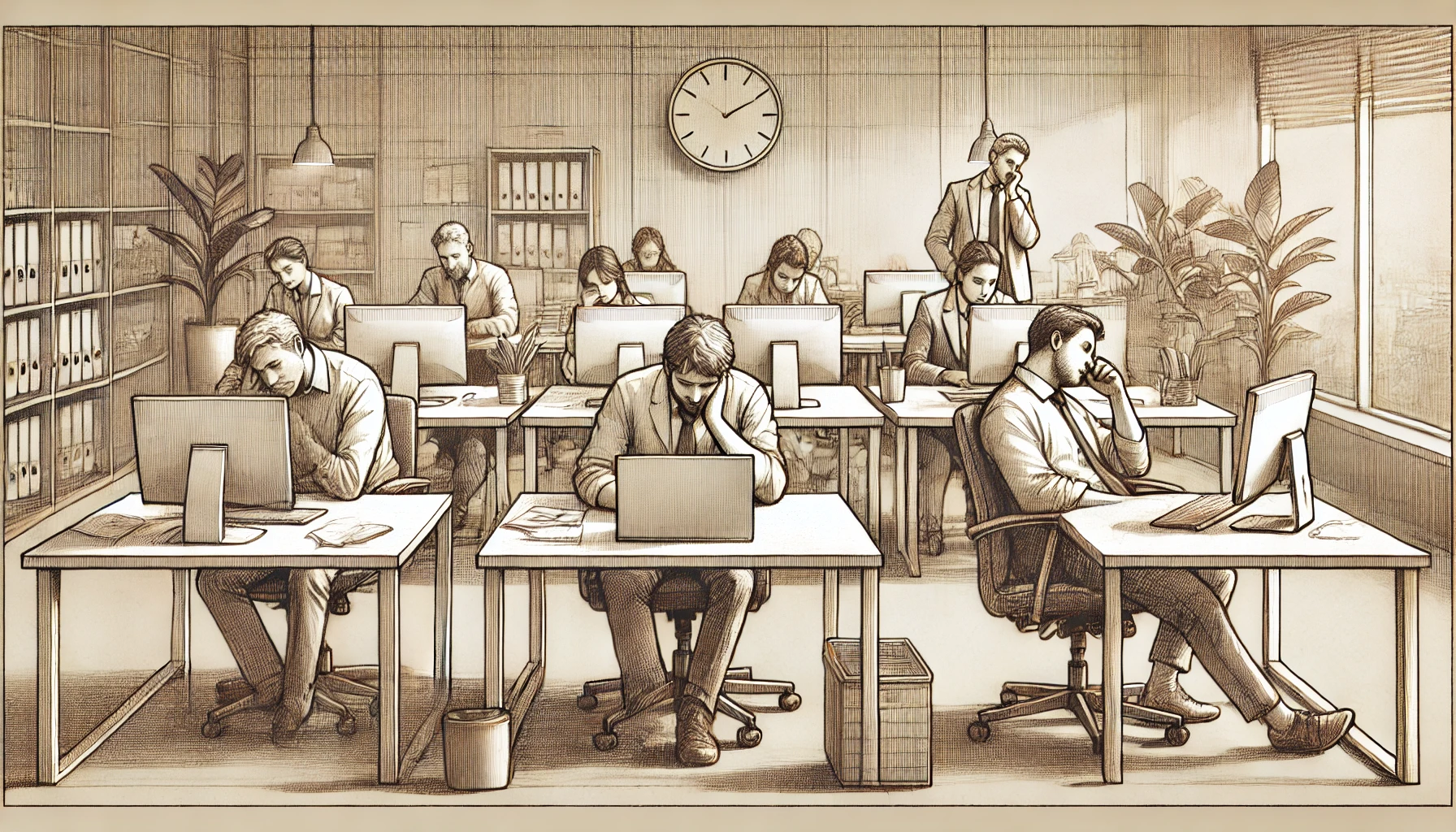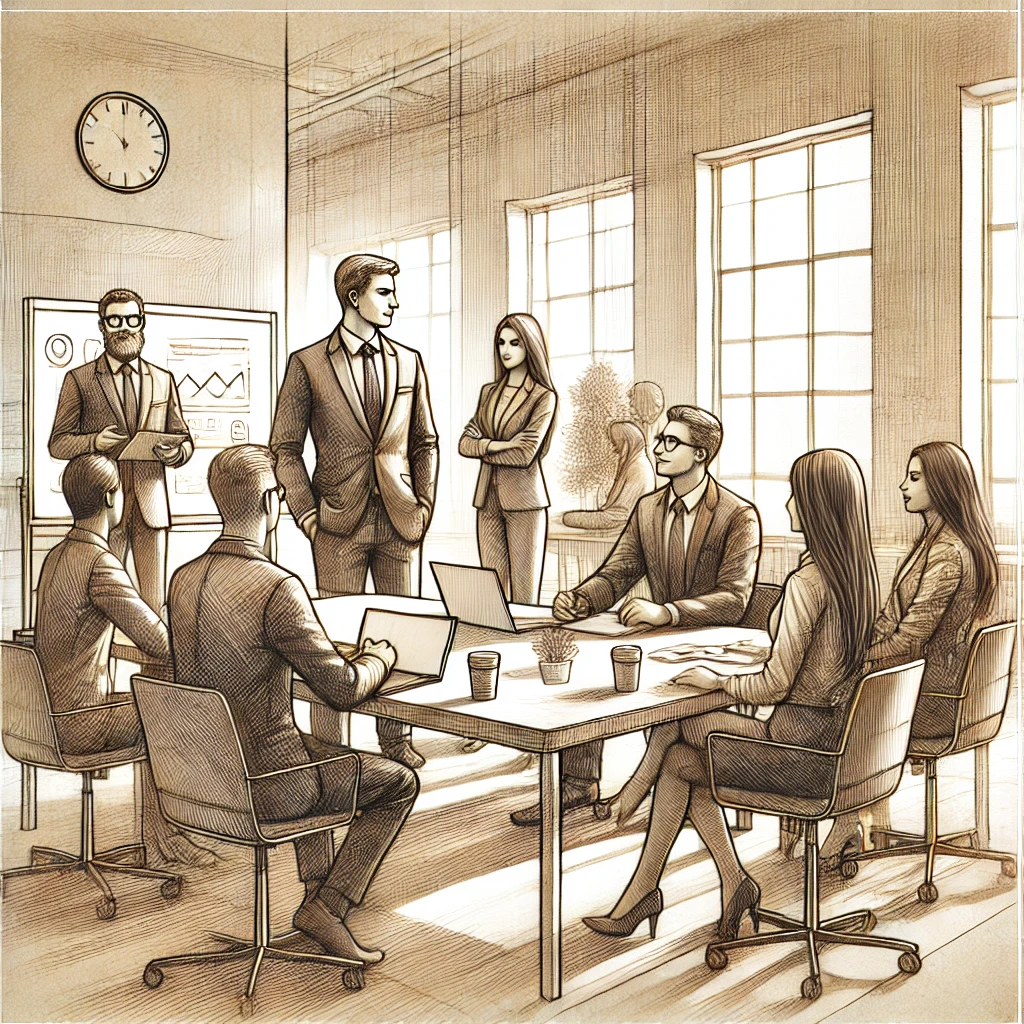
"Change fatigue" is often blamed for disengagement in organisations, but is it really the amount of change that wears people down, or is it something deeper? Leaders and managers frequently use this term to justify triaging priorities, but are we addressing the real issue?
Fatigue is a serious concern, so let’s take a closer look at what’s behind the claims and how we might manage them effectively.
What is Fatigue
Fatigue is typically defined as "extreme tiredness resulting from mental or physical exertion or illness" (Oxford Languages). It is a serious health condition that can significantly impact both mental and physical well-being.
The effects of fatigue are far-reaching and include (Better Health Channel, Safe Work Australia):
- Cardiovascular issues, such as increased risk of heart disease.
- Weakened immune system, leading to greater susceptibility to illness.
- Metabolic and gastrointestinal disorders, including diabetes and digestive issues.
- Musculoskeletal pain, caused by chronic physical exhaustion.
- Decreased cognitive function, impairing memory, focus, and decision-making.
- Neurodegenerative diseases, which may be linked to prolonged fatigue.
- Headaches and migraines, often triggered or worsened by fatigue.
In the workplace, fatigue is recognised not only as a health risk but also as a harm caused by psychosocial factors like poor planning, lack of support, and unmanaged stress. If the term "fatigue" is used frivolously, we risk desensitising its significance and trivialising a genuine health concern. Addressing fatigue thoughtfully is crucial to safeguarding both employee well-being and organisational performance.
Does Change Cause Fatigue?

Fatigue can result from a variety of factors, but change itself is not inherently fatiguing. In fact, many changes are made specifically to improve our physical or mental well-being.
Consider the lifestyle changes people often adopt to reduce stress and increase energy:
- Exercise routines
- Improved sleep habits
- Healthier diets
- Socialising more regularly
- Stress management practices
We may even make several of these changes at once—like during a health retreat—to boost our overall well-being. Notably, the global market for health and wellness retreats has grown significantly, projected to grow to $1.4 trillion USD by 2027. This illustrates how change, when designed and managed well, can be energising rather than exhausting.
However, not all changes are created equal. The way change is introduced and managed plays a significant role in how people respond to it. When does change create conditions that lead to fatigue? The answer lies in how it interacts with other fatigue-inducing factors, such as:
- Stress and burnout: Changes can be stressful when they disrupt an employee’s sense of identity or create uncertainty about the future.
- Poor sleep hygiene: Stress caused by disorganised or poorly communicated changes can lead to sleepless nights.
- Dietary factors: Workplace changes that increase stress or workload can negatively impact eating habits.
- Environmental factors: Challenging workplace conditions—such as unrealistic deadlines or lack of resources—can exacerbate fatigue.
In the workplace, change can become a significant stressor when employees feel unsupported or excluded. Key examples include:
- Change imposed on employees rather than done with them: Lack of consultation creates a sense of powerlessness.
- Failure to account for the impact on employees: For example, insufficient time for training or adjusting to new processes.
- Poor planning and execution: Disorganised changes with no clear or tangible benefits can frustrate those expected to implement them.
- Insufficient communication: Employees are left guessing due to unclear, untimely, or incomplete information.
- Lack of support: Missing or inadequate training, documentation, or resourcing adds unnecessary pressure.
Ultimately, while change itself does not cause fatigue, the way it is introduced and managed can create the conditions for fatigue to arise. To prevent this, we need to address the underlying risks and challenges rather than assuming that change itself is to blame.
Preventing Change Fatigue in the Workplace
While change may contribute to fatigue in the workplace, the real culprit is often the way the change is managed. Fatigue should be treated like any other psychosocial hazard: systematically identified, assessed, and addressed. A thoughtful approach not only reduces fatigue but also improves engagement and outcomes for everyone involved.
Here’s how you can use the Safe Work Australia risk management process to prevent change fatigue:
1. Identify Specific Hazards
Start by gathering insights from your workforce.
- Talk and listen: Conduct interviews, focus groups, or casual conversations to understand employee concerns.
- Collect feedback systematically: Use surveys, polls, or suggestion boxes to get a broad perspective.
- Observe behaviour: Watch for signs of stress, reduced collaboration, or burnout among employees.
- Use data: Review metrics like absenteeism, turnover, or productivity dips to identify patterns that might indicate fatigue.
- Identify control measures: Factor in metrics that will tell you whether your controls are working and incorporate them into your data collection.
Example: If employees repeatedly highlight tight deadlines as a source of stress, you might identify unrealistic scheduling as a key hazard.
2. Assess the Impact
Evaluate the potential consequences of unaddressed fatigue.
- Consider the severity of the risk: Are employees already showing signs of burnout or disengagement?
- Evaluate the duration: Is this a short-term issue tied to one change, or part of a larger pattern?
- Understand the scope: How many employees are affected, and how critical are their roles?
Example: If poor communication is identified as a concern, assess how this might affect productivity or lead to resistance against future changes.
3. Control the Risk
Build proactive solutions into your change management plans. Address the underlying risks through careful planning, communication, and support.
Key strategies include:
- Timing: Stagger or sequence changes to avoid overwhelming employees.
- Workload adjustments: Allow time for employees to train or adapt without adding to their workload.
- Tangible benefits: Clearly demonstrate how the change will improve processes or outcomes for employees.
- Clear communication: Provide timely, consistent, and transparent updates.
- Robust support: Offer training, resources, and access to expertise to make transitions smoother.
- Empower managers: Managers are on the front lines of recognising fatigue. Equip them with the tools and training needed to identify early signs of stress, address workload concerns, and provide support where it's most needed.
Example: When introducing a new software tool, train managers to watch for signs of stress in their teams, like reduced engagement during meetings or recurring errors in tasks.
4. Ongoing Review
Change plans require continuous review to ensure their effectiveness and adapt to evolving challenges.

- Measure effectiveness: Use surveys, focus groups, or other tools to track employee sentiment and engagement post-change.
- Adapt your approach: If employees feel rushed or unsupported, adjust by resequencing changes or adding resources.
- Stay flexible: Regularly revisit your plans to address new challenges or risks as they arise.
Example: After implementing a new workflow, hold follow-up sessions to gather employee feedback and address any lingering issues.
For a deeper look at managing psychosocial risks in the workplace, read Psychosocial Risk Changes – Compliance or Culture.
In the words of the Greek philosopher Heraclitus, “The only constant in life is change.” This applies not only to the workplace but also to how we manage change itself. The best way to prevent change fatigue is to include employees in the process, address their concerns, and be prepared to adapt your plans when needed.
By listening, acting, and iterating, leaders can turn the challenge of change fatigue into an opportunity to build a stronger, more resilient organisation.
And if someone mentions “survey fatigue” as an excuse not to collect feedback, remember this: Fatigue rarely stems from the act itself—it arises from the stress of unaddressed issues. Listening to your people is the first step to making change work for everyone.